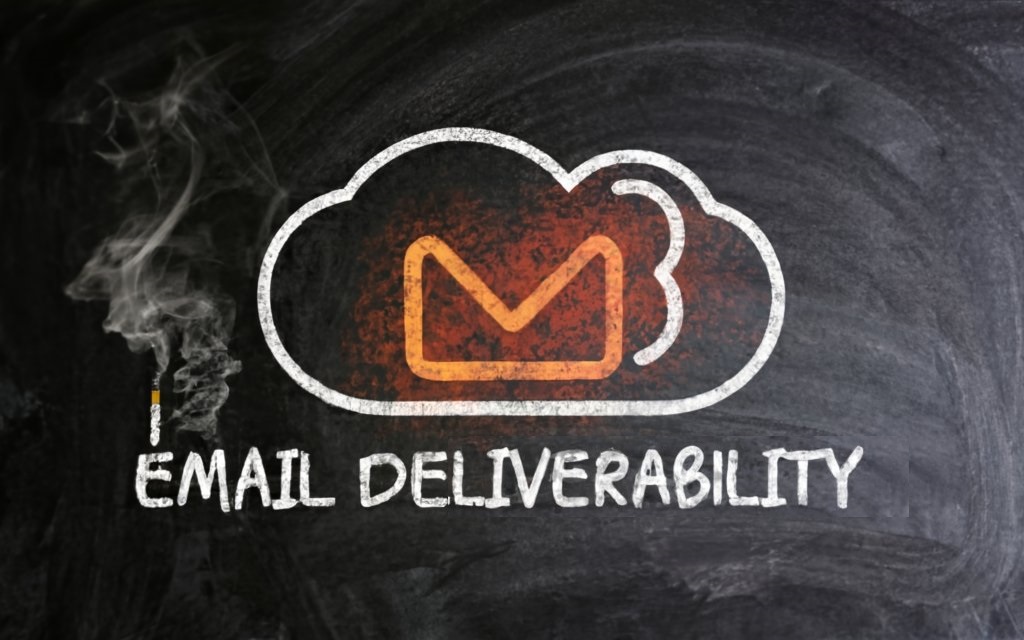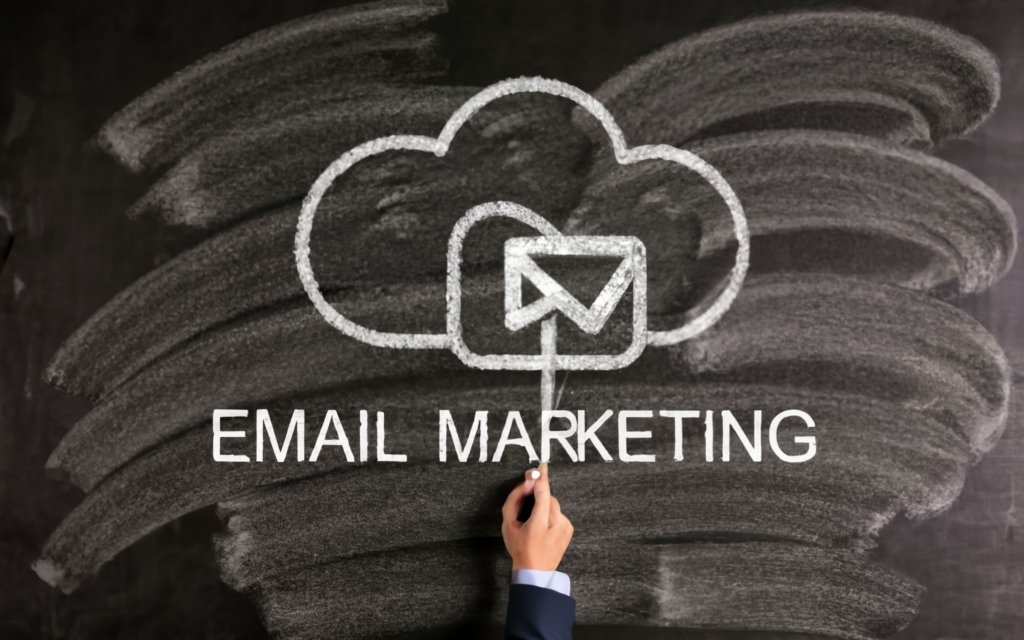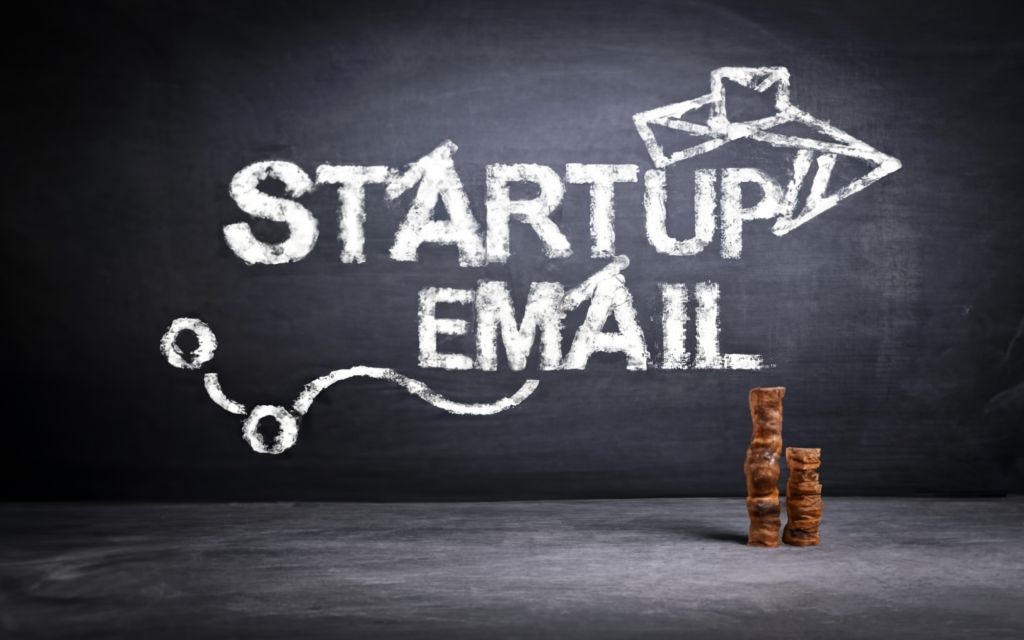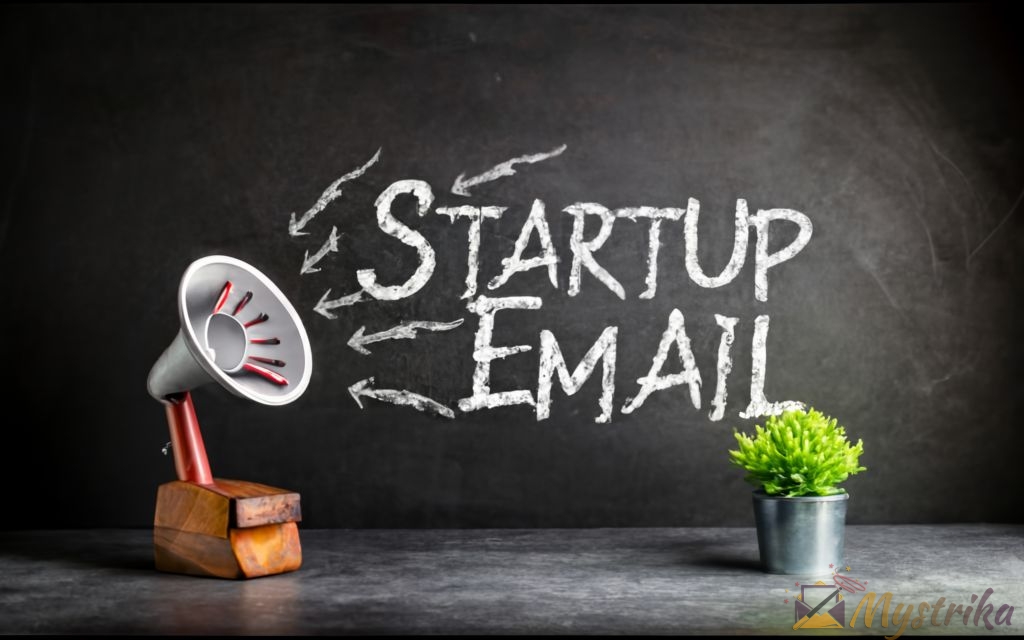Email is the non-sexy workhorse critical to every startup’s success. While not as glamorous as landing pages or viral features, mastering your inbox delivers outsized impact. This comprehensive guide explores everything founders and entrepreneurs need to know – from evaluating providers, improving deliverability, integrating tools, and automating campaigns to unlocking analytics and upgrading to premium experiences. Whether starting your email journey or seeking to modernize workflows, this resource covers critical strategies and solutions for elevating your inbox from afterthought to competitive advantage. Read on to transform team communication, amplify marketing, and delight customers through the power of email.
Choosing the Right Email Service for Your Startup
When starting a business, one of the most important decisions you’ll make is choosing an email service. Your startup’s email account will be the central hub for all communication – with your team, customers, partners, and more.
With so many options on the market, how do you determine the right email provider for your unique needs? Here are the key factors to weigh when evaluating solutions:
Key Considerations When Evaluating Email Providers
Deliverability and Inboxing Rates
The ability to reliably reach the inbox is a top priority. You don’t want your critical emails ending up in spam or getting lost. Seek out services with high deliverability and inbox placement rates. Features like warmup tools, sender reputation monitoring, and engagement-based automation can help.
Security and Compliance
Your customers’ data and privacy are paramount. Prioritize secure platforms that enable encryption, two-factor authentication, and adherence to regulations like HIPAA and GDPR. Having confidence in safety will build customer trust.
Scalability
As your startup grows, can your email service scale with you? Look for solutions that offer features like unlimited contacts, elastic IP pools, and seamless integration with CRMs or other tools. Starting with scalability in mind prevents pain later.
Ease of Use
Avoid complicated or cluttered interfaces – you want email that’s simple for your team to use day-to-day. Clean designs, intuitive navigation, thorough onboarding, and stellar technical support increase adoption across your startup.
Integrations
Best-in-class platforms integrate seamlessly with other tools you rely on, like chat, calendars, CRM, project management, and more. Broad integration capabilities avoid work silos and streamline communication.
Automation Capabilities
Leveraging email automation – like sequences, workflows, and triggers – can provide huge time savings as you scale. Look for robust automation options that align to your needs, from onboarding to re-engagement.
Reporting and Analytics
In-depth analytics on opens, clicks, responses, and more enable you to continually refine your approach. Make sure your provider offers the visibility you need to optimize deliverability, engage your audience, and demonstrate ROI.
Customer Support
Not all support teams are created equal! Having access to responsive, consultative experts can make a big difference, especially at a startup. Seek providers that offer multiple support channels and inclusive onboarding.
Pricing and Value
Don’t sacrifice important benefits to save a few dollars early on. Establish a budget for email services commensurate to their immense value in your stack. Prioritize solutions that can scale with your growth.
Top Email Services for Startups
Now that you know what to look for in an email provider for your startup, let’s explore some leading options specifically designed with the needs of entrepreneurs in mind:
Gmail
The default choice for many, Gmail offers a free option for basic email along with affordable upgrades via G Suite for enterprise features. With solid deliverability and integrations, it provides a low-risk starting point.
Outlook 365
Microsoft’s full-featured cloud email provides commercial-grade tools for only a few dollars per user monthly. From calendar sharing to Teams collaboration, it brings together core productivity needs.
Zoho Mail
This business-class email service features 5GB inboxes, spam protection, backups, mobile access, and integration with the wider Zoho ecosystem of business apps.
ProtonMail
For startups focused on security and privacy, ProtonMail enables end-to-end encryption and open source transparency. Plans start at €4 per month.
Hey
An innovative solution founded by Basecamp, Hey reimagines core email concepts like the inbox with unique features for filtering and organization.
Superhuman
This premium email app turbocharges productivity with speed, shortcuts, read statuses, and other enhancements. Plans cost $30 per month.
The email provider you ultimately choose depends on your startup’s budget, features, integrations, and scale. Assessing both immediate and future needs will ensure your platform can propel your business growth for years to come.

Setting Up Your Startup’s Email Address and Signature
You’re ready to launch your startup. You have a killer idea, motivated team, and crunched the numbers proving viability. But have you locked down all the foundational elements that will represent your brand? Two key items often overlooked are your startup’s email address and signature.
These may seem minor, but they significantly impact first impressions and ongoing relationships. Invest time upfront to establish professional, memorable details that reinforce your positioning.
Choosing a Professional Email Address
Avoid using your personal Gmail or ISP email as your startup’s primary address. While fine to begin, you’ll eventually want an email matching your brand website domain.
Your Domain vs Free Email
Emails like [email protected] look far more legit than generic accounts. Owning your domain also enables easier switching between email providers in the future.
Free options from Gmail, Outlook, or Zoho work initially. But for ultimate flexibility, register your own domain once you have a name. Services like Google Domains, GoDaddy, or Namecheap make registration affordable.
Options for Creating Email Aliases
Most email platforms allow you to create alias addresses tied to accounts. Set up names aligned to different departments or functions:
- support@
- sales@
- jobs@
- press@
Aliases help organize inquiries and prevent individuals from getting overloaded. You can also assign unique addresses to help track campaign performance.
For sending administrative email, create a generic alias:
- admin@
- info@
- no-reply@
Designing an Effective Email Signature
A professional email signature instantly provides visibility into your brand. Treat it as prime real estate to showcase essential details at the close of every message.
Including Essential Details
Every signature should feature:
- Your full name and title
- Company name
- Email address
- Phone number
Consider also adding your startup’s mailing address.
Creating a Consistent Brand Image
Incorporate logos, fonts, colors, and slogans that reinforce your visual identity. Maintain this styling across every team member’s signature for consistency.
Avoid overly large or complex graphics that are hard to view on mobile. Focus on key elements that are legible at-a-glance.
Promoting Your Social Media Presence
Adding social media links provides passive promotion with every email you send. Prioritize channels where you are most active or wish to grow your following.
Hyperlink logos for LinkedIn, Twitter, Instagram, Facebook, YouTube, and TikTok.
Adding a Call-to-Action
Signatures present a free opportunity to include a CTA – like “Schedule a Demo” or “Download Our Whitepaper.
Link these to targeted landing pages on your website. CTAs catch readers’ attention and provide smooth navigation to convert.
In summary, investing a bit of forethought into your startup’s email presence pays dividends. A professional address aligns with your brand identity and enables flexibility. A well-designed signature reinforces critical details and gives a nod to your social presence.
With both established, your startup puts its best digital foot forward and ensures emails always align to broader positioning. Just don’t let meticulous details derail you – start with the essentials as you craft your story.
Email Deliverability Strategies for Startups
You meticulously crafted the perfect cold email sequence. The messaging is compelling, offer irresistible, subject lines catchy. You hit send on your campaign…and hear nothing but silence in response.
This common horror story stems from one culprit – poor email deliverability. If your outreach never even reaches the inbox, no amount of marketing genius will make an impact.
As a startup seeking traction, deliverability should be priority #1. Here’s why it matters, and techniques to dramatically improve your rates.
Why Deliverability Matters
Deliverability is the percentage of emails that arrive successfully, rather than being blocked by spam filters. High deliverability has three core benefits:
Improve Open and Response Rates
Low inbox placement hampers your entire customer journey. Even the most captivating content can’t work its magic if no one sees it. Getting to the inbox is step one for driving engagement.
Avoid Spam Folders
In the best case, inefficient deliverability means your email is relegated to spam. But false positives often result in messages being blocked entirely. Neither helps build relationships.
Build Sender Reputation
Positive sender reputation signals to ISPs that your messages are wanted, improving future delivery. This is a marathon, not a sprint – start focusing on reputation early.
Techniques to Improve Deliverability
Implementing best practices at your company’s onset prevents headaches as you scale. Here are proven techniques to enhance inbox placement:
Warming Up New Domains
Brand new domains lack positive sending history, risking spam filtering. Warm up fresh domains by steadily sending emails that get opened before launching full campaigns.
Monitoring Bounce Rates
Bounced emails damage sender score. Track hard and soft bounce rates across campaigns, then remove problematic addresses.
Optimizing Subject Lines
Tricky subject lines containing spammy words or ALL CAPS often get flagged. Test subject lines and avoid risky terminology.
Personalizing Outreach
Personalized emails seem less spammy. Pull in custom details when reaching out to build relevancy.
Sending From Proper Domains
Use authoritative domains like your website URL for outreach over free ones like Gmail.
Using Services Like SendGrid or Mailgun
Rely on trusted delivery infrastructure. Leading services like SendGrid and Mailgun optimize routing and reputation.
By being proactive with deliverability, your outreach will be received rather than blocked. Don’t take the inbox for granted – ensuring your startup’s emails get through is foundational to growth.
Try services like Mailgun or SendGrid that help new businesses establish positive sender reputations. With attention upfront, your emails will reach the right inboxes at the right time.

Email Marketing Automation for Startups
You’ve likely heard the stats – companies that leverage marketing automation grow revenue faster. But what exactly does automation provide? And how can early stage startups benefit from activating campaigns, even with a small audience?
Implementing even basic automation delivers major advantages. Now is the time to adopt tools that will scale with your startup’s growth.
Benefits of Marketing Automation
Automation may seem intimidating. But it doesn’t have to be complex. Solutions make executing multi-step workflows drag-and-drop simple. Core benefits include:
Saves Time
Reduce redundant manual tasks like sending one-off emails. Automation handles repetitive follow-ups at scale based on triggers and time delays.
Increases Consistency
Ensure every contact receives the same sequences, with no gaps or missed touches. Automation eliminates human error.
Enables Drip Campaigns
Draw prospects down sales funnels via timed nurture campaigns that provide staged value.
Flexibility to Scale Campaigns
Automated systems allow you to send more emails without additional work. Your reach expands exponentially as your segments grow.
Even basic automations focused on onboarding, re-engagement, or retention provide immense value. Avoid delayed setup – the sooner you implement, the faster you’ll reap rewards.
Email Marketing Platforms to Consider
The market offers a range of solutions tailored to every budget and need. Here are top platforms specifically suitable for lean startups:
Mailchimp
A popular entry-level choice, Mailchimp enables automation via drag-and-drop “automations” and basic segmentation.
Constant Contact
Trusted by small biz, Constant Contact offers approachable campaign building with automation guided by a visual workflow editor.
ConvertKit
ConvertKit equips solopreneurs and early-stage startups with landing page integration, tags for segmentation, and powerful sequences.
Klaviyo
With advanced features like predictive modeling, Klaviyo suits ecommerce startups selling online. Integrations abound.
Omnisend
An automation-centric platform purpose-built for scaling product brands through sophisticated omnichannel workflows.
Evaluate free trials to choose the solution aligning best to your use cases, technical needs, and growth trajectory. Many offer forever-free plans to get started.
Types of Emails to Automate
Nearly any email can be automated based on triggers like user actions, thresholds, dates, events, and more. Prioritize these high-ROI campaigns:
Welcome and Onboarding Sequences
Guide users through setup and activation via multi-email series with tips and incentives.
Cart Abandonment Emails
Tempt shoppers to complete purchases after abandoning carts by showcasing discounts or preferred payment options.
Re-Engagement Campaigns
Encourage inactive users to re-engage with tailored content and offers sent after periods of inactivity.
Customer Win-Back Flows
Entice one-time purchasers to buy again through loyalty offers and new arrivals announcements.
Review Requests
Request feedback via automated review prompts sent post-purchase at 30, 60, and 90 day intervals.
Surveys
Gain broader insights by sending timed surveys covering satisfaction, features, referrals, and more.
In summary, don’t leave easy wins on the table. Marketing automation powers growth by expanding reach, creating consistency, and enabling experimentation. Dive into platforms offering value at scale aligned to your unique trajectory.

Tracking Analytics and Optimization
You’ve put in the hard work designing campaigns, landing customers, and retaining users. But don’t stop there – effective email marketing is a flywheel requiring continual refinement and optimization.
Robust analytics provides the fuel to ratchet performance higher. By tracking key metrics, A/B testing variables, and monitoring trends, your startup will continually expand impact.
Essential Metrics to Track
A wealth of data is available dissecting how your audiences interact with email. Prioritize tracking these fundamental metrics:
Open, Clickthrough, and Response Rates
These metrics form the email marketing trifecta, indicating engagement. Benchmark against industry averages and set goals.
Bounce and Spam Rates
High bounce or spam rates signal deliverability issues requiring investigation. Monitor weekly for spikes.
Unsubscribe Rate
A surge in opt-outs hints at messaging missing the mark. Keep below industry average rates.
Engagement by Segment
Compare open and clickthrough rates across segments. Double down on your best performers.
Monitoring the metrics that matter prevents operating in the dark. Establish goals and dashboards to maintain visibility as volumes scale.
A/B Testing Strategies
The difference between lackluster email performance and breakthrough results often boils down to rigorous testing and refinement.
Regular A/B testing assesses what resonates with your audience to guide future content. Test variables like:
Subject Lines
Alternative subject lines can dramatically impact open rates. Test length, urgency, emojis, personalization.
Content Formatting
Vary content presentation – text vs. visuals, length, callouts. Measure results.
Calls to Action
Stronger CTAs boost conversions. Evaluate placement, copy, color, size.
Send Times
Determine optimal days and times for your audience by testing across the calendar.
Segmentation
Compare results by segment. Customize approaches for paid vs. free users, high- vs. low-value groups, and more.
Continue iterating. Even slight gains compound over time. Never settle for the status quo.
Using Insights to Continually Refine
Treat your email program as a scientific instrument, constantly observing, hypothesizing, and validating. Key areas to refine based on learnings include:
Improving Deliverability
If spam or bounce rates increase, revisit sender reputation tactics and list hygiene.
Creating More Relevant Content
Analyze engagement by segment and campaign type to tailor future content accordingly.
Adjusting Cadence and Send Times
Use open and click data to determine ideal frequency and days for each audience.
Optimizing Journeys and Automations
Review analytics by journey stage to shorten ineffective paths or improve conversions.
Startups rhythms are 24/7, nonstop. Among the flurry of tasks vying for your time, don’t neglect email analytics. Consistent assessment provides fuel to scale your marketing machine.
Integrating Work Tools into Your Email Workflow
Email doesn’t happen in a vacuum. To enable seamless productivity, integrate your startup’s email with surrounding systems for customer data, calendars, and projects.
Connecting platforms eliminates disjointed workflows. Equally important, syncing apps builds a single source of truth and comprehensive visibility.
Connecting Email with Your CRM
Linking email marketing and CRM platforms enables precise targeting and messaging personalization using rich customer data. Popular CRMs include:
Salesforce
The behemoth CRM leader offers native integration between its Marketing Cloud Email Studio and Sales or Service Clouds.
HubSpot
Hubspot’s CRM and email tools feature tight alignment for linking contacts to campaigns, tracking interactions, and more.
Zoho CRM
For startups embracing the wider Zoho ecosystem, CRM integrates directly with Zoho Mail for simplifying sales communications.
Pipedrive
Pipedrive’s pipeline-centric CRM connects with email apps via native integration and Zapier to enrich outreach.
Whichever CRM you adopt, invest time in bi-directional syncing for the complete story of every subscriber and their journey.
Linking Email Services with Calendar Tools
Nothing hampers productivity like scheduling call after call. Streamline it by connecting email platforms with popular calendar apps.
Google Calendar
The calendar behemoth integrates with email services out-of-the-box for easily scheduling from Gmail.
Office 365 Calendar
Similarly, Microsoft email services like Outlook directly link with Office 365 calendars to simplify booking.
Calendly
The popular scheduling assistant integrates with email apps via Zapier to automatically collect responses.
Doodle
Find meeting times faster by integrating Doodle polls into email outreach for recipients to share availability.
Eliminate manual back-and-forth with calendar integration. Recipients can respond to scheduling requests directly within email, reducing friction.
Enabling Email Productivity With Project Tools
Don’t forget about linking email to your project management platforms. Doing so provides greater transparency into task status without switching apps. Consider hooks into:
Asana
Sync Asana projects with your email app to automatically log emails as comments on relevant tasks to centralize communication.
Trello
Email updates directly into Trello boards and cards based on senders, content, attachments or other data for effortless logging.
Jira
Connect Jira tickets to email conversations via two-way syncing between inboxes. No more lost context.
Wrike
Log emails to Wrike using inbound integrations that attach messages as comments or attachments on items to maintain continuity.
In summary, don’t allow your startup’s tech stack to become siloed. Invest time in thoughtful integrations across email, CRM, calendars, and project tools. The payoff is more connected teams, informed customers conversations, and unified data.

Securing and Compliance for Startup Email
Email forms the lifeblood of most startups. As such, security and compliance should be priorities from day one. Don’t wait for a breach or violation to occur. By proactively addressing risks, you protect customer trust and your company’s standing.
Implement these best practices to securely manage information and adhere to email regulations.
Implementing Email Security Protocols
Attackers relentlessly target inboxes to spread malware and steal data. Counter with layered defenses:
SPF, DKIM, and DMARC
Enable these protocols on your domain to verify sender identity and prevent spoofing.
Encryption
Encrypt email in transit and at rest to prevent snooping. Consider PGP encryption for sensitive communications.
Two-Factor Authentication
Boost login security by requiring 2FA apps or devices when accessing email accounts.
Strong Passwords
Enforce password complexity, rotation, and multi-factor delete protection to lock down mailboxes.
Also consider tools like encrypted email services, data loss prevention, and insider threat monitoring to further lock down email.
Adhering to Email Regulations
In addition to security, startups must adhere to anti-spam and privacy laws governing email communications. Key regulations include:
CAN-SPAM Act
This U.S. law mandates opt-out links, sender info, and other rules for commercial email. Violations risk major fines.
GDPR
For startups with EU users, GDPR mandates addressing data requests, lawful processing, and tighter consent.
CCPA
If doing business in California, address CCPA’s data privacy provisions allowing consumers to opt-out of data sales.
Consult legal counsel to ensure your practices adhere to email laws applicable to your location and users. Also confirm your ESP facilitates compliance needs like one-click opt-outs.
Avoiding Blacklisting Pitfalls
Landing on ISP blacklists spells disaster, blocking email delivery. Avoid these missteps:
Monitoring Sender Reputation
Use tools to monitor factors like spam complaints impacting reputation with major ISPs.
Honoring Opt-Out Requests
Remove addresses when unsubscribes are received to avoid spam complaints.
List Cleaning and Suppression
Scrub lists of risky addresses and suppress problematic domains that could cause issues.
Low Complaint Rates
Deflect complaints preemptively by previewing spam checkers and contacting abusers before sending.
With email volume exploding amidst increasingly sophisticated threats, prioritize security and compliance from the get-go. Follow best practices and don’t cut corners – your customers’ trust depends on it.
Comparing Superhuman vs Hey for Startup Email
Email overload plagues professionals everywhere, destroying productivity. Startups feel this acutely, with small teams juggling immense workloads. It’s no wonder innovators are disrupting legacy providers like Gmail.
Two email services making waves are Superhuman and Hey. Both promise faster, smarter email tailored for high-performing teams. But which platform reigns supreme? Let’s explore the pros, cons, key differences, and ideal use cases.
Overview of Superhuman and Hey
First, a quick look at each offering’s background:
Superhuman
- Founded in 2014, based in San Francisco
- Raised $56 million in VC funding
- Desktop and mobile apps for Mac, iOS, web
- Starts at $30 per month
Hey
- Created in 2020 by Basecamp founders
- Self-funded by profitable parent company
- Web app and iOS app (Android coming)
- Pricing based on number of custom domains
Both provide premium email experiences modernizing legacy providers. But the offerings take divergent approaches.
Core Features and Capabilities
Superhuman turbocharges productivity via speed, shortcuts, and automation. Hey aims to fix email at a fundamental level using innovative concepts like Imbox and The Feed.
Let’s dig deeper into the pros and cons of each platform.
Superhuman Pros and Cons
Superhuman attracts rave reviews from users – when they can get access. Here are the highlights along with downsides:
Fast Performance
The app is meticulously engineered for speed, making workflows snappy and delightful.
Keyboard Shortcuts
Keyboard junkies will relish the 100+ shortcuts that accelerate navigation.
Read Receipts
See exactly when your email is read and by who, enabling better followup timing.
Strict Qualification Process
Gaining entry is arduous, requiring an extensive application and phone interview.
High Monthly Cost
At $30 per month, Superhuman is significantly pricier than most solutions.
For startups valuing ruthless efficiency above all, Superhuman delivers – if you make the cut. The exclusivity and premium pricing give it an aura more akin to a luxury product.
Hey Pros and Cons
In contrast, Hey seeks to fundamentally evolve core email concepts:
Innovative Features Like Imbox
Imbox removes the need to triage and sort emails, while The Feed organizes by engagement.
Built for Privacy
Hey prioritizes security, with encrypted message bodies and no tracking pixels.
Alternative Pricing Model
Instead of a flat monthly fee, pricing is based on number of custom domains.
Limited Integrations
As a newer platform, Hey lacks the rich ecosystem of Superhuman or Gmail integrations.
Friction with Non-Hey Users
Requirements like customized subject lines can hamper messages from non-Hey senders.
Hey’s unconventional features aim to eliminate email angst. But its exclusivity also poses hurdles – even Basecamp didn’t fully switch internal email to Hey.
Key Differences and Which Is Best for You
Deciding between Superhuman and Hey depends on your startup’s culture, values, and budget. Key differences include:
- Superhuman streamlines existing concepts; Hey rethinks them entirely.
- Superhuman turbocharges power users; Hey simplifies for anyone.
- Superhuman costs more but supports business domains; Hey charges per custom domain.
- Superhuman has more mature ecosystem integrations; Hey is more limited.
- Superhuman aids productivity; Hey reduces stress and triage.
Weigh your startup’s needs, resources and priorities. For an innovative, affordable option optimizing for psychological safety, try Hey. To maximize output for high-volume power users, go Superhuman.
Or, stick with a free platform until achieving product-market fit. Once email becomes unmanageable, revisit premium solutions aligned to your style and stage.

Key Takeaways
Email plays a pivotal role in any startup’s success. Mastery of your inbox can propel growth, while neglecting it can sink progress.
To recap the breadth of considerations covered:
- Carefully evaluate leading email providers based on key criteria like deliverability, compliance, support, and ease of use before selecting one aligned to your startup’s needs and stage.
- Establish a professional yet memorable email address and signature upfront to reinforce your brand in all communications.
- Make email deliverability a priority starting on day one to maximize inbox placement and response rates over the long-term.
- Leverage email marketing automation to increase consistency and scale sequenced campaigns that convert.
- Track engagement analytics continuously to surface insights and refine strategy. A/B test regularly to optimize every campaign.
- Integrate your email platform with surrounding workplace systems for seamless communication and transparency across tools.
- Secure email via protocols like SPF and DKIM while adhering to regulations such as CAN-SPAM and GDPR to keep customers’ trust.
- Consider advanced inbox experiences like Superhuman and Hey down the line to boost team productivity and overhaul legacy models.
By mastering the strategies and solutions covered throughout this guide, your startup can build an email foundation for scalable success. With inbox essentials buttoned up, you’re freed to focus fully on your core mission.
Frequently Asked Questions
What are the most important factors when choosing an email service for a startup?
The top factors to evaluate are deliverability rates, security, ease of use, scalability, compliance with regulations, integrations, analytics, and customer support availability. Ensure the solution aligns with your startup’s stage, needs and budget.
How much should a startup spend on email services?
How can startups warm up a new domain for better deliverability?
It depends on the stage of your business. Free options like Gmail are fine initially. Upgrade to paid plans or suites like G Suite as you grow. Advanced solutions like Superhuman cost more but offer premium experiences – weigh the benefits against your budget.
Strategies include consistently sending from the domain, managing bounced/spam complaints, adding SPF/DKIM records, monitoring sender reputation, and consider using warmup services like Mailgun or SendGrid.
What automation tools are best for early-stage startups?
Entry-level options like Mailchimp, Constant Contact, and ConvertKit offer approachable campaign builders to activate basic flows for CRM onboarding, winbacks, surveys, and more.
What metrics are most important for startups to track?
Vital metrics include open rate, clickthrough rate, response rate, bounce/spam rate, unsubscribe rate, and engagement by segment. Track weekly to surface issues and refinement opportunities.
How can startups improve email security?
Require strong passwords, enable two-factor authentication, encrypt data, implement SPF/DKIM/DMARC records, and leverage tools like inbox rotation services for anonymity.
What regulations do startups need to comply with for email?
Key regulations include CAN-SPAM Act, GDPR, and CCPA. Adhere to opt-out requirements, lawful data usage, and viewer rights like data access/deletion. Consult an attorney for specifics.
How should startups connect their email to other work tools?
Prioritize integrating your email platform with your CRM, calendar tools, and project management systems using native connectors or apps like Zapier.
When should startups consider premium email solutions?
Free options work at the outset. Once productivity or deliverability becomes hampered, explore premium choices like Superhuman or Hey which overhauls workflows.
What makes Superhuman and Hey different from legacy providers?
They offer reimagined interfaces optimized for speed, shortcuts, automation and organization. But they also have exclusivity requirements and cost much more than free solutions.

